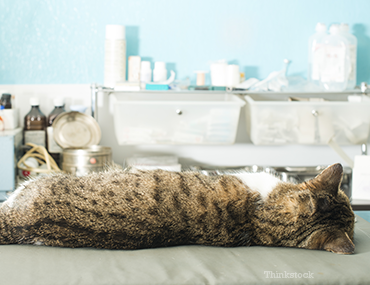
Dr. Phil Zeltzman is a traveling, board-certified surgeon in Allentown, PA. His website is www.DrPhilZeltzman.com. He is the co-author of “Walk a Hound, Lose a Pound” (www.WalkaHound.com).
Kelly Serfas, a Certified Veterinary Technician in Bethlehem, PA, contributed to this article.
Of all the worries pet owners may have around surgery, anesthesia probably tops the list. Unfortunately, their concerns are often the wrong ones. Here are four anesthesia myths we hear regularly.
1. Anesthesia is risky
Okay, so this is not a complete myth. Of course there is always a risk with anesthesia, but it’s immensely smaller than most pet owners believe.
Of ALL patients, including the healthiest and the sickest, what percentage of pets don’t make it through anesthesia? 30%? 20%? 10%? 5%? 1%?—what would you guess?
David Brodbelt, a British board-certified anesthesiologist, studied the medical records of over 98,000 dogs and 79,000 cats that underwent anesthesia at over 100 different practices. This was an extravagantly large study by veterinary standards. According to PubMed, Brodbelt found that the “overall risk of aesthetic and sedation-related death in dogs [was] 0.17%...in cats 0.24%.”
As you can see, this indicates that anesthesia is very safe overall—much safer than most would think. With our improved knowledge of anesthesia drugs and excellent advancements in monitoring equipment, the percentage of dogs and cats that die under anesthesia is a fraction of 1%.
Surely, specific conditions (trauma, diseases and infections) can increase the risks, but these issues are more manageable than you might think. By performing pre-operative blood work and tailoring the anesthesia drugs for each pet, veterinarians can minimize the risks.
 2. Most complications occur during surgery or while under anesthesia
2. Most complications occur during surgery or while under anesthesia
Here’s a great example of a classic urban legend. Most of the time, the biggest risks are not during surgery and anesthesia but during recovery.
As a pet awakens, there are a number of complications that can arise. In the Brodbelt study I mentioned earlier, over 50% of pets who died after surgery, died within 3 hours of the procedure ending; this is why it is critical to take your pet to a hospital where trained nurses will continue to closely monitor your pet after anesthesia.
3. All vets offer and practice the same anesthesia techniques
Actually, every veterinarian seems subject to personal opinion when it comes to anesthesia; the same way everyone has their own personal preference when it comes to cars. Some people want a Ford, while others only buy Honda, but ultimately both cars will get you from point A to point B. Similarly, different veterinarians will use different methods. Naturally they’ll choose the methods that they are the most knowledgeable and comfortable with and that they feel are safest for your pet based on blood work, physical examination, disease, breed, age etc.
4. Anesthesia drugs can harm my pet
While all medications—even a “simple” antibiotic—have risks, very few pets will experience an unexpected reaction. Each drug has its time and place, which is why pre-operative examination, basic blood work and sometimes additional lab work are important before surgery.
Additionally, it may be possible to temper the side-effects of some drugs. For example, some anesthesia drugs can indirectly affect the kidneys, which can be protected by keeping the patient on the proper amount of IV fluids.
Please remember, anesthesia is very safe overall. What matters most is the nature of the drugs used, the knowledge of the people using them and the care provided to patients when they wake up from anesthesia.
If you have any questions or concerns, you should always visit or call your veterinarian -- they are your best resource to ensure the health and well-being of your pets.
